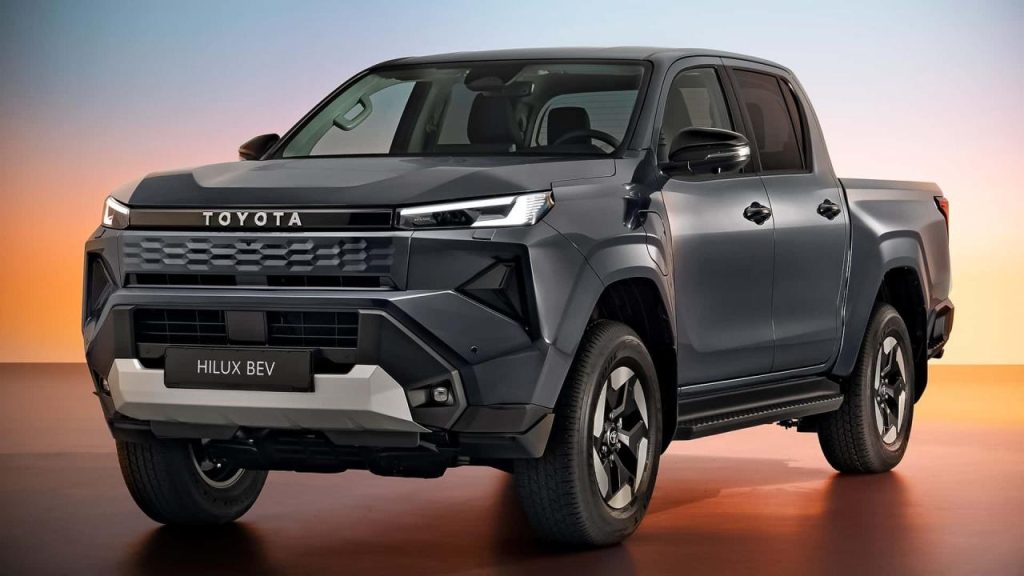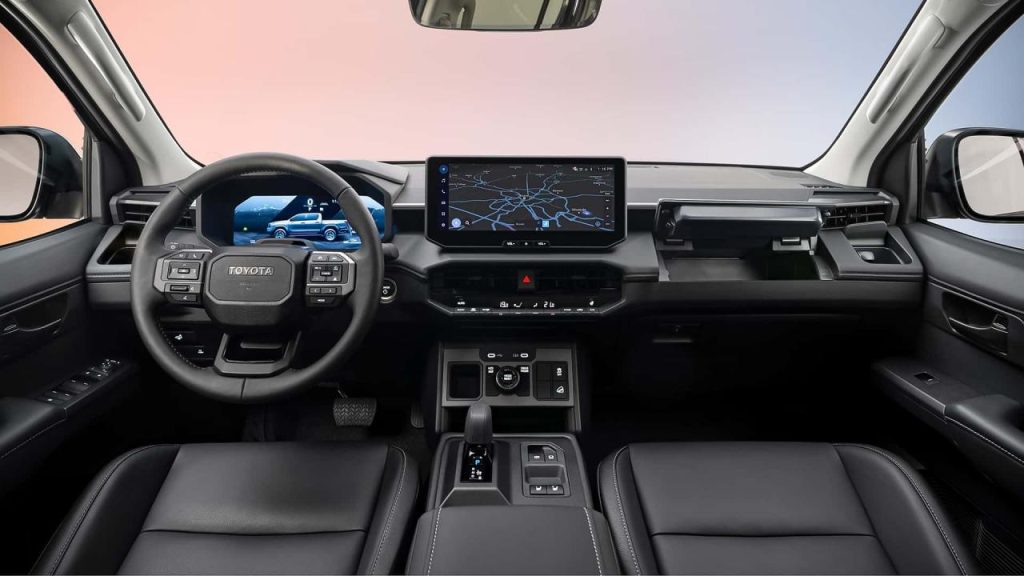The newest generation of the Toyota Hilux has finally broken cover — and it marks a significant shift for the iconic pickup by introducing hybrid and electric powertrain options alongside the more traditional internal-combustion engines.
What’s New: Design & Architecture
While the overall silhouette retains the robust “workhorse” stance the Hilux is known for, Toyota has updated the styling with sharper lines, a modernised front fascia, and interior upgrades that reflect current trends.
The key architectural shift is that this ninth-generation Hilux will also be offered as a body-on-frame EV (battery electric vehicle) — the first time Toyota has done so for the Hilux platform.
Powertrain Options – More Choice Than Ever
Here’s how the new Hilux lineup breaks down:
- Conventional ICE (internal combustion engine) variants: These include a 2.7-litre petrol and a 2.8-litre turbo diesel (the latter possibly with a mild-hybrid 48 V assist).
- Mild-hybrid / hybrid assist option: The 2.8-litre diesel is paired with a 48 V hybrid system in some markets, helping with torque and efficiency.
- Full battery-electric version (BEV): Equipped with a ~59.2 kWh battery, dual motors (front and rear), permanent all-wheel drive, and a claimed WLTP-style range of ~240 km.
- Fuel-cell electric variant (FCEV) — confirmed for future rollout in select markets.
Key Technical Numbers
- BEV version: 59.2 kWh battery, dual motors (AWD), pre-homologation numbers suggest payload ~715 kg and towing ~1,600 kg for the EV.
- ICE / hybrid versions: Payload capacity up to 1,000 kg and towing around 3,500 kg (in diesel + hybrid form) in some markets.
- Off-road / utility-friendly features: Wading depth, body-on-frame construction, updated chassis.
What This Means For Buyers & Market
- More flexibility: Buyers can choose from high-torque diesel workhorses (for towing/heavy utility duty) or move to a more environmentally focused BEV version without sacrificing the Hilux name.
- Electrification of utility vehicles: The Hilux BEV is a sign that Toyota is treating pickups not just as ICE territory. For commercial fleets, urban usage, or regions promoting zero-emissions vehicles, this opens new applications. Australia’s Toyota arm says the BEV version is “integral” to its multi-pathway decarbonisation strategy.
- Trade-offs to consider: The BEV version currently offers ~240 km range (pre-homologation) and a lower payload/towing capability compared to the ICE versions — so heavy-duty users may still prefer the diesel/hybrid model.
- Geographic rollout & availability: Markets and specs will vary — Toyota has confirmed BEV and FCEV versions for certain regions (e.g., Australia) but hasn’t yet specified full Indian or global availability/timing.
What About India / Local Markets?
While the reveal is global, for India or similar markets, the following considerations apply:
- Local diesel/hybrid engine options may be favourable since diesel infrastructure is strong, and utility/towing demands are high.
- The BEV version could be compelling for city-fleet or commercial usage, but factors like charging infrastructure, range (240 km is modest for some tasks), and affordability will matter.
- If Toyota brings the new Hilux to India, import duties, localisation, and compliance with Indian safety/emissions regulations will influence pricing and specification.
- Buyers intending off-road, heavy-duty towing will benefit from the ICE/hybrid versions more immediately; the EV is probably more suited to urban/less demanding duty initially.
Summary
The new-gen Toyota Hilux marks a major shift: it retains the brand’s rugged utility DNA but embraces electrification in earnest. With diesel and petrol engine options now joined by a 48 V hybrid and full battery-electric model — and even a fuel-cell future variant — Toyota gives buyers more choices than ever.
Utility vehicle buyers and fleet operators will find appeal in this versatility, while the BEV version signals Toyota’s commitment to sustainable mobility across segments.
For heavy-towing, high-payload use cases, the ICE/hybrid versions still hold their ground; for urban commercial or emission-sensitive markets, the EV offers a new path. How this plays out locally (in India, South Asia) will depend on Toyota’s market strategy, pricing, and infrastructure readiness — but it’s safe to say the Hilux era is entering a new chapter.



